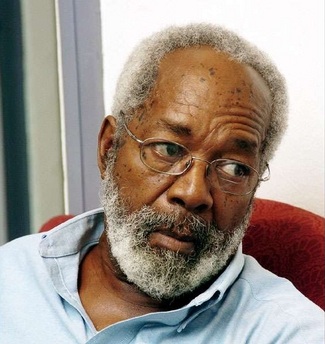
|
IntroductionBarrington Watson
Born in Hanover, Jamaica, in 1931, Professor the Honourable Barrington Watson, OJ, was educated at London's Royal College of Art,
attended the Académie de la Grande Chaumière in Paris and the Rijksacademie in Amsterdam amongst other major European art academies.
Returning to Jamaica in 1961 he quickly became one of the most influential post-Independence artistic figures.
Along with Eugene Hyde and Karl Parboosingh, he established the Contemporary Jamaican Artists’ Association (1964-1974)
and was the Director of Studies at the Jamaica School of Art, introducing the full-time diploma.
He later served as visiting professor at Atlanta's Spelman College. Barrington has executed several major commissions,
including the mural The Garden Party (1975) and the installation Trust (1975, with Cecil Baugh) at the Bank of Jamaica,
the mural Our Heritage (1974) at Olympia Art Centre and various official portraits, including past Prime Ministers of Jamaica,
Martin Luther King (1970) at Spelman College in Atlanta, and former Commonwealth Secretary and University of the West Indies Chancellor Sir Shridath Ramphal,
at the University of the West Indies – Mona (1992) and at Marlborough House in London (1995).
Barrington: A Retrospective
Barrington: A Retrospective surveys the oeuvre of Jamaican master Barrington Watson, from the 1950s to the present through 259
paintings and works on paper. Included are masterpieces from the National Art Collection such as Mother and Child (1958-59),
Washer Women (1966, on cover), Athlete’s Nightmare (1966), and Conversation (1981) and other major works from private and corporate collections.
This retrospective exhibition is organized around the wide range of themes explored in Barrington Watson's work, including history painting,
genre, portraits and self-portraits, nudes, erotica, the landscape and the still life, all grounded in academic realism.
This colour-illustrated catalogue documents the works in the retrospective along with a few others. Also included are scholarly essays on
various aspects of the work by David Boxer, Claudia Hucke and Veerle Poupeye, and a biographical chronology by Tamara Scott-Williams.
|
 National Gallery of Jamaica
National Gallery of Jamaica


